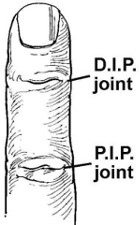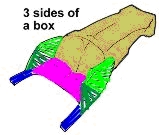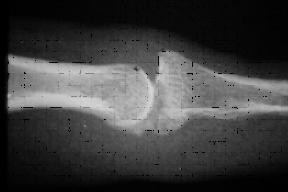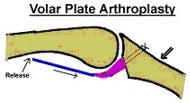The Proximal Interphalangeal (P.I.P.) Joint is the commonest sprained or dislocated joint in the hand.
Many of these injuries are treated by a coach, a trainer or by the patient, who may consider them trivial.

Unfortunately, delays in diagnosis and treatment, under treatment, & particularly over-treatment may lead to many problems and prolong disability and pain.
It is important to know if the finger was deformed at the time of injury and if someone had to pull it back into place.
An understanding of the complex anatomy of this joint is essential for diagnosis and treatment.
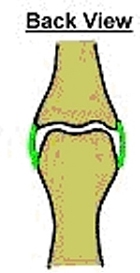
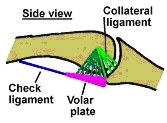
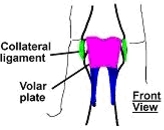
The Problem:
The major long-term problem is stiffness & prolonged irritability in the joint following these injuries.
This may last for 6 - 9 months.
Sometimes there is permanent thickening of the joint following severe injuries. In the short term, however it is vital to prevent re-dislocation in unstable injuries and so various splints may be required.
Diagnosis:
1. Collateral ligament tear Partial Complete
2. Volar plate avulsion Stable Unstable
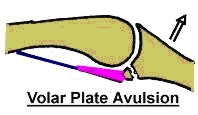

This chip fracture on both the DIP & PIP joints is the commonest pattern of injury ( although a double avulsion fracture is very uncommon). This required splinting for a few days to control the pain and then and active exercise program because it is a stable injury.
3. Fracture / dislocation:
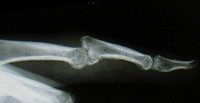
This required surgery as did the severe injury below.
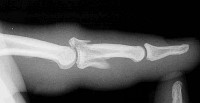
Treatment:
1. Control swelling with ice & COBAN bandage. This bandage can be obtained from the physiotherapists or my secretary and is self-adhesive. It is thin enough to allow a full range of movement of the finger when applied properly. Only a single layer should be applied. Beware - it is easy to apply the bandage too tightly.
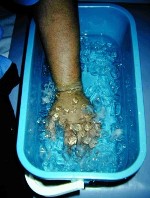
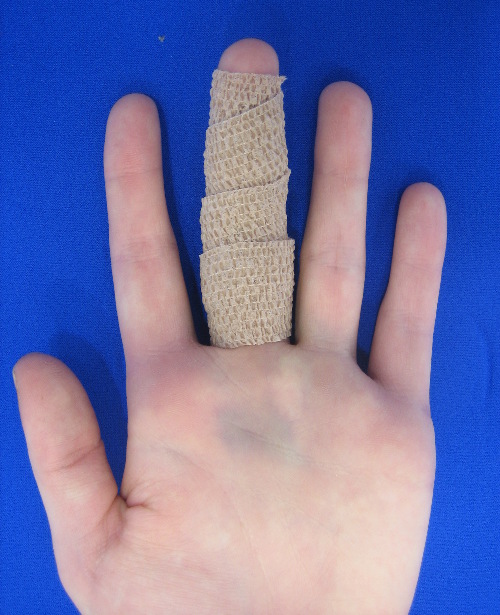
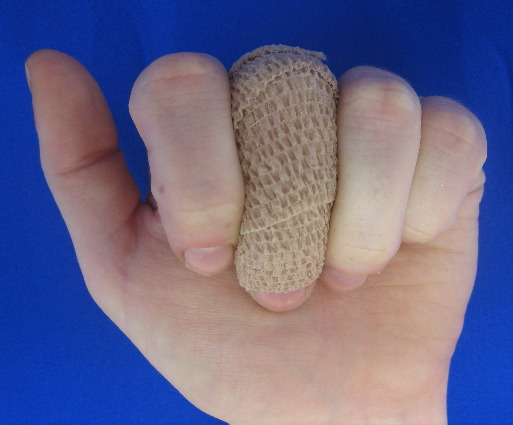
2. Prevent re-dislocation - this is not a common problem. Use buddy strapping to adjacent finger or extension block splints
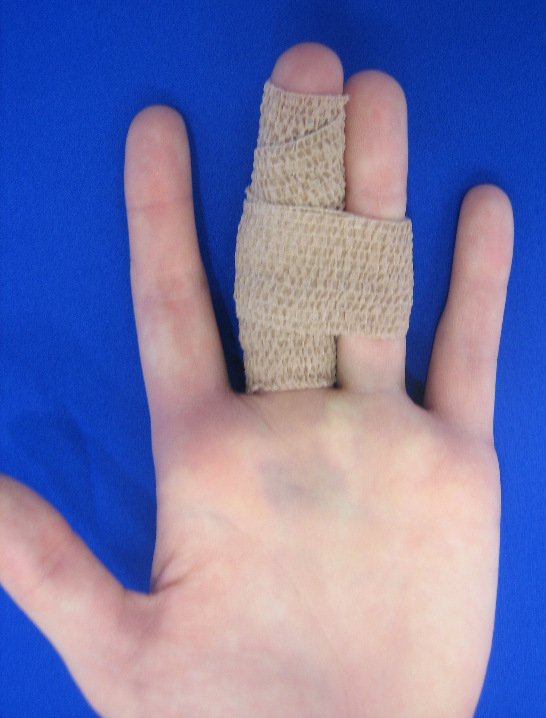
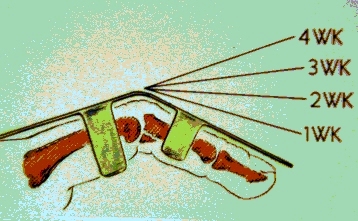
3. Prevent stiffness - if the injury is stable the finger can be exercised immediately in a bucket of ice and later in warm water.
This is the commonest situation. In general these injuries are over treated with splints resulting in unnecessary stiffness.
4. Re Xray - if the injury is unstable the joint may re-dislocate. Dislocation or partial dislocation (Subluxation) may be present but the finger may appear deceptively straight due to the marked degree of swelling. Therefore regular X-rays are performed in these rare cases. In the case below there is persistent mild displacement of the joint.
5. Surgery - occasionally the injury is so severe that surgery is required to stabilise the joint. This is uncommon. (See diagram.)

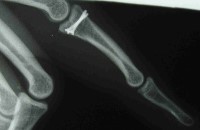
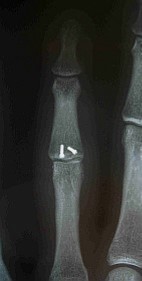

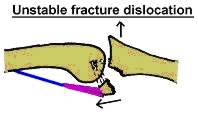
LAST UPDATED ON MONDAY,30 / 3 / 2015

